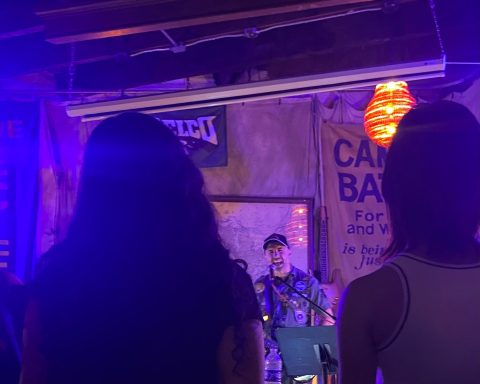Editor’s note: This article was initially published in The Daily Gazette, Swarthmore’s online, daily newspaper founded in Fall 1996. As of Fall 2018, the DG has merged with The Phoenix. See the about page to read more about the DG.
Ah, summer romance. Finding that charmer who puts butterflies in your stomach, the sensitive type who reads you their poetry—it’s common college-age and young adult behavior to develop one of those fleeting, but oh-so-intense, crushes on someone who you just can’t stop thinking about.
Yet while (probably) many of my classmates were chatting up the sexy beach lifeguard or daydreaming about that cute tour guide in a foreign country, my summer lovin’ took a different form than most.
I fell in love, yes… but in a museum, and with the oeuvre of an artist who has been dead since 1669.
I fell in love with Rembrandt’s prints.
For the uninitiated, Rembrandt van Rijn (1606-1669) is one of the most popular and beloved artists from the Dutch Golden Age. Hailing from the Netherlands, Rembrandt is best known for his moody, somber-hued paintings of religious scenes and portraits. His ability to draw out the emotions of his subject matter, as well as his keen eye for surface texture and detail, make viewing his works a truly powerful experience.
This summer, I arrived in Chicago to intern at the Prints and Drawings Department at the Art Institute of Chicago with a bit of knowledge about Rembrandt’s painting oeuvre, but little to nothing about his prints—or about printmaking in general. While I’d done simple linoleum block printing in middle and high school on occasion, I didn’t know an etching from an engraving, or a lithograph from an aquatint. I was a prints and drawings novice, but I had a keen desire to learn more about works by this great artist.
I also had a mission. I had been charged, upon accepting my internship, with the assignment of helping the Department to catalogue their considerable collection of Rembrandt’s etchings and to help assess the strength of this collection.
So… I guess my summer romance started out as more of a spy flick?
Over the course of the two months I worked in the department, I not only learned about collection management on the technological side—I got to actually handle the tiny, delicate prints themselves, which numbered about about three hundred in total, in addition to learning more about Rembrandt himself. It was a deeply intimate and almost emotional experience to know that the mats (large heavy sheets of paper used in framing) I was holding contained pieces of paper that had been touched by this genius artist. I also got to write web text for a few Rembrandt prints of my choosing, and to that end did a lot of extensive research about how Rembrandt depicted his subjects, be they women, religious figures, or prominent figures in Amsterdam.
While Rembrandt’s paintings are more widely famous than his prints, over the course of the summer I came to prefer the sketchiness and liveliness of his prints on a personal level. The Great Jewish Bride, one of Rembrandt’s best etchings, demonstrates the artist’s mastery of technique as he simulates the delicate textures of fur, hair and cloth in a relatively small scale (the work is less than 22 by 17 centimeters). This print, one of the works I focused on, stayed with me due both to its technique and due to its potential subject matter: the work is thought to depict Queen Esther, one of my favorite Jewish heroines, before she risks her life to go before her husband, the King, uninvited, to save the Jews of Persia.

During the summer, I also got to assist curators with various smaller projects, including writing wall text for a small hallway show—another highlight of my experience at the Art Institute. I helped out with visitors to the Department’s light, airy study room, I dabbled in drawings and provenance research, and I was taken on two excellent tours of contemporary art in Chicago, including a private collection. I also gained practical knowledge in handling prints and drawings, and may well end up focusing on prints and drawings in my hopeful future career as a museum curator.
So while my summer was not like that of many of my classmates in one respect (the museum environment), I think I can find some common ground with my fellow students. This short-lived but passionate affair made me feel engaged, and the work I did was truly rewarding and edifying. Even though the summer internship had to end, what I saw and researched will definitely stay with me as I move forward in my art-historical career.
…The thick creamy color of the print mats, the dynamic and energetic linework, the sexy smell of old paper…
Who says romance is dead after all?
Featured image courtesy of the Art Institute of Chicago.
















